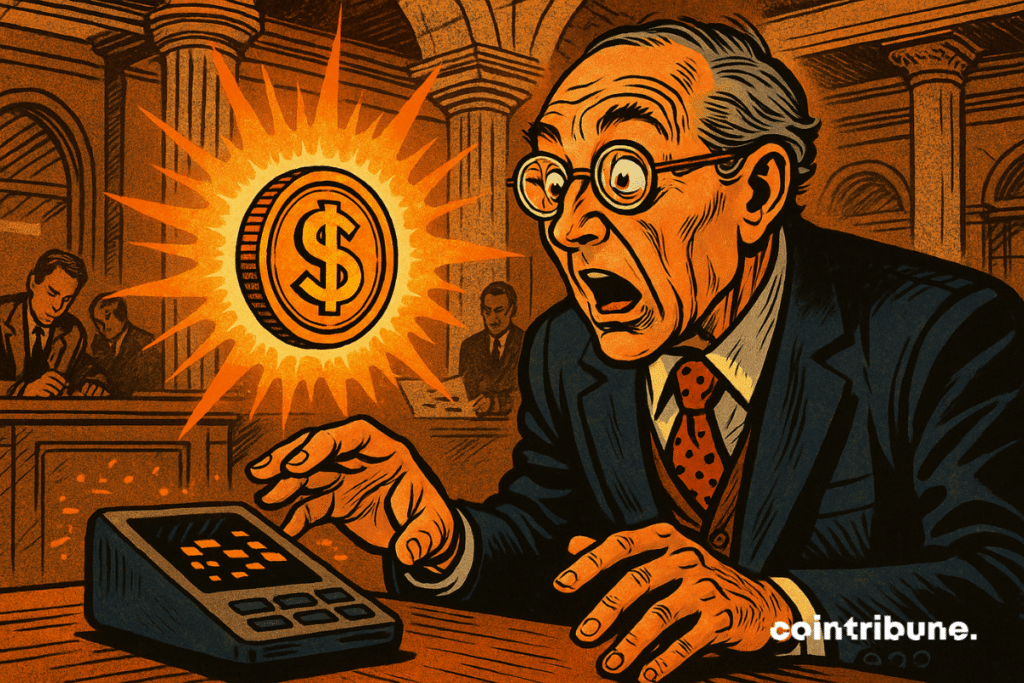Banks "Very Interested" In Stablecoins According To Stripe
The traditional banking sector is embarking on a historic shift towards stable cryptocurrencies. Discussions between Stripe and financial institutions reveal massive interest in this technology. But will widespread adoption depend solely on the goodwill of regulators?

Banks ready to take the step with stablecoins
Stripe, which reactivated crypto payments in April 2024 after a 6-year pause, reveals today an unexpected phenomenon. John Collison, co-founder of Stripe, unveiled an unknown trend to the general public during an interview with Bloomberg.
Global banks show a “very strong interest” in integrating stablecoins into their services. This revelation marks a historic turning point for institutions traditionally wary of crypto.
This transformation responds to purely economic considerations. Stablecoins disrupt the traditional financial balance by offering instant transactions at negligible costs.
Faced with “extremely costly” bank exchange fees according to Collison, these cryptocurrencies backed by the US dollar represent a formidable alternative.
The numbers speak volumes: quarterly volumes of stablecoins have surpassed those of Visa and Mastercard combined in 2024. This performance demonstrates a massive adoption that the traditional banking sector can no longer ignore.
Banks realize that resisting this innovation would mean forfeiting a growing share of the international payments market.
Stripe anticipated this evolution by launching stablecoin-based accounts in around one hundred countries at the beginning of May. This strategic initiative positions the company as a bridge between the traditional economy and the emerging crypto ecosystem.
Regulation, the last obstacle to massive adoption
Despite this apparent enthusiasm, banks remain dependent on regulatory decisions. The United Kingdom perfectly illustrates this dilemma: the Financial Conduct Authority is still soliciting public comments on new rules regarding stablecoins, thus delaying adoption.
This regulatory slowness worries John Collison, who warns of a talent drain to more accommodating jurisdictions.
Companies are created to serve this sector. Without regulatory certainty, they go elsewhere.
This warning resonates particularly in a context where Europe is accelerating with the MiCA regulation.
In the United States, regulatory debates are also intensifying. Recent bills like the GENIUS Act demonstrate the American desire to regulate these assets while preserving the sector’s competitiveness.
The Trump administration has also clearly expressed its intention to use stablecoins to reinforce the dollar’s hegemony on the international stage.
American banks are multiplying requests to the government to obtain clearer guidelines on their prerogatives regarding crypto. This institutional pressure shows that interest in stablecoins goes beyond a mere fashion trend.
The irony of the situation lies in the fact that the United Kingdom, despite its regulatory lag, records the strongest growth of new cryptocurrency holders in Europe, according to Gemini. This dichotomy between popular adoption and legal framework illustrates the urgency of regulatory harmonization.
The interest of banks in stablecoins is no longer a hypothesis but a confirmed reality. This evolution marks the traditional finance entering the crypto era. For venture capital investors, payments in dollars via stablecoins represent the most promising blockchain use.
Maximize your Cointribune experience with our "Read to Earn" program! For every article you read, earn points and access exclusive rewards. Sign up now and start earning benefits.
Passionné par le Bitcoin, j'aime explorer les méandres de la blockchain et des cryptos et je partage mes découvertes avec la communauté. Mon rêve est de vivre dans un monde où la vie privée et la liberté financière sont garanties pour tous, et je crois fermement que Bitcoin est l'outil qui peut rendre cela possible.
The views, thoughts, and opinions expressed in this article belong solely to the author, and should not be taken as investment advice. Do your own research before taking any investment decisions.